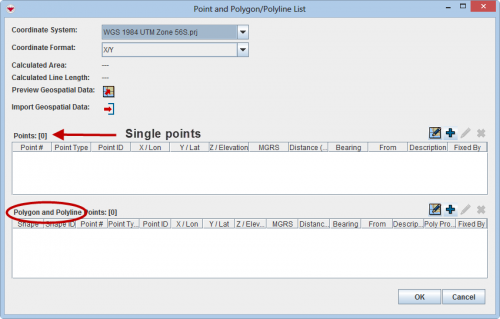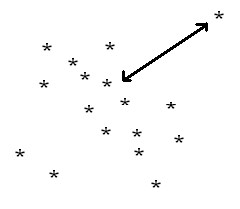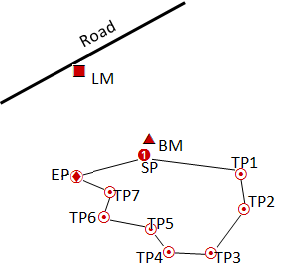Difference between revisions of "Point Types"
| Line 2: | Line 2: | ||
__FORCETOC__ | __FORCETOC__ | ||
{{TOC right}} | {{TOC right}} | ||
| + | [[Image:Point_types.png|500px]] | ||
| + | |||
Which point type that should be used depends on: | Which point type that should be used depends on: | ||
* is it a single point; | * is it a single point; | ||
Revision as of 21:54, 3 June 2014
Point types and when to use them
Which point type that should be used depends on:
- is it a single point;
- is it a point that is part of a polygon / polyline;
- the type of contamination.
Point types where the main intended use is for Cluster and UXO
Cluster munitions and other UXO should not be defined as area with perimeters i.e. not as polygons. They should be recorded as evidence or usage points.
Usage point has three main types:
- verified target point;
- intended target point;
- firing point (both land and air).
Evidence point If there is a strong claim, you have high confidence and therefore should record it. Examples of strong claims are:
- strike marks;
- fragmentation;
- unexploded submunitions/UXO (even if it has been removed);
- CBU container;
- part of container or submunitions;
- accident caused by Cluster munitions / UXO.
| |
The report should reflect where the Cluster munitions/UXU were found, not the demolition site.
The position and/or the accuracy are very import for calculation of the fade out distance. |
Point types where the main intended use is for mines or BAC
Point types used for recording of areas are of two main types;
- single points;
- part of the polygon.
Single points for areas
Reference point is a fixed point of reference some distance outside the hazardous area. It should be an easily recognised feature (such as a cross-roads or a bridge) which can be used to assist in navigating to one or more benchmarks.
Landmark has the same definition as Reference point.
Benchmark is a fixed point of reference used to locate a marked and recorded hazard or hazardous area. It should normally be located a short distance outside the hazardous area. It should be safe to walk from the Reference / Landmark to the Benchmark.
| |
A benchmark may not be necessary if the reference point / landmark is sufficiently close to the perimeter of the hazardous area. |
Polygon / polyline points for areas
Start Point is used as the name for the first Turning point in the polygon/polyline. Datum Point has the same definition as Start point but is more unusual. Turning point is a fixed point on the ground which indicates a change in direction of the perimeter of the hazardous area. It shall be clearly marked and recorded. Buried metal objects should be used to mark all turning points for permanent future reference. Intermediate point is a survey marker used between Turning points that are more than 50m apart or if it is not possible to see the next Turning point due to e.g. vegetation. End Point is used as name for the last Turning point of the polygon/polyline.
Point types to be used for AXO / Ammunition Storage
AXO / Ammunition Storage is a special case which normally is a spot and then reference point should be used. If the area is big a polygon should be recorded as well.


